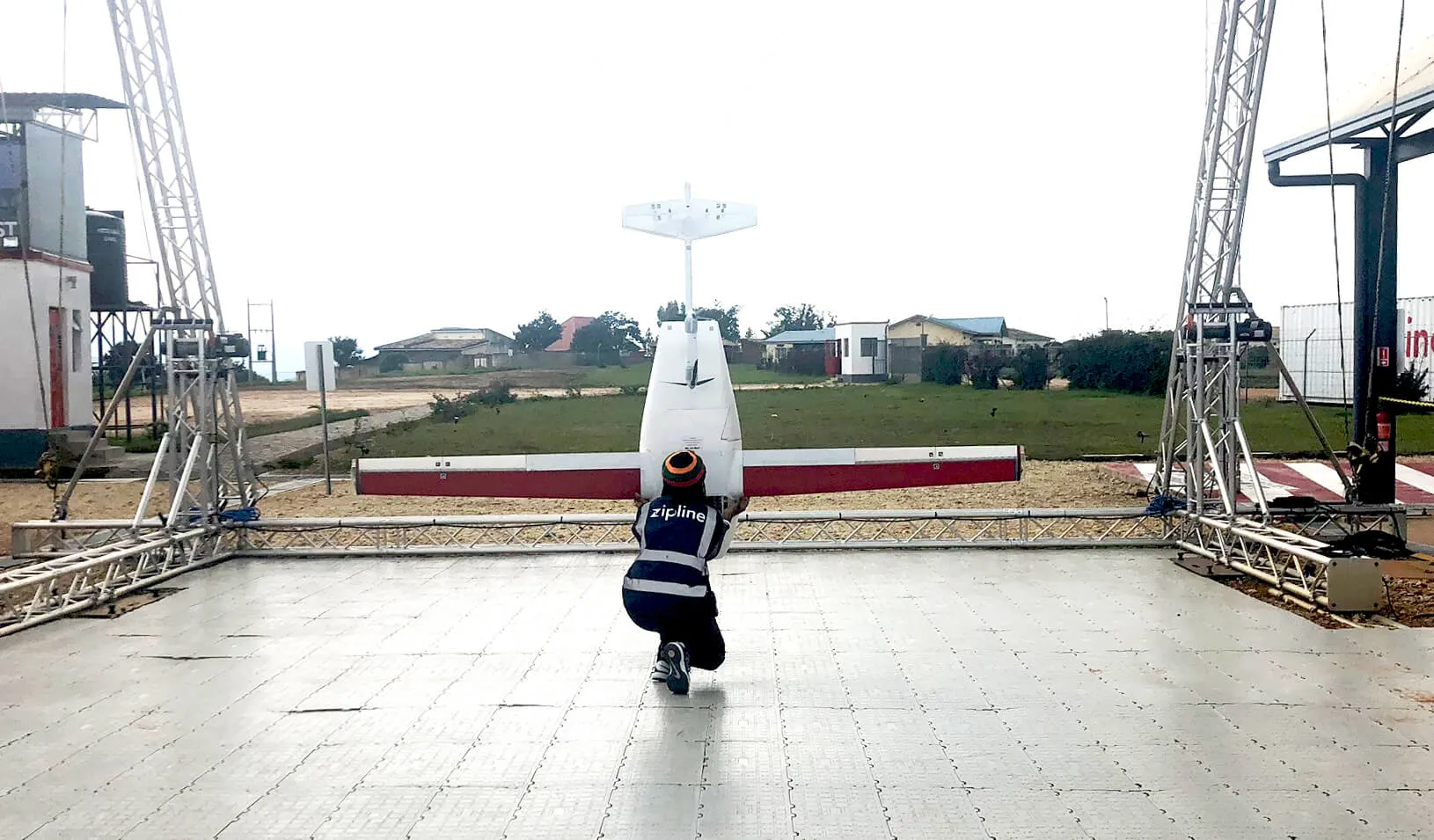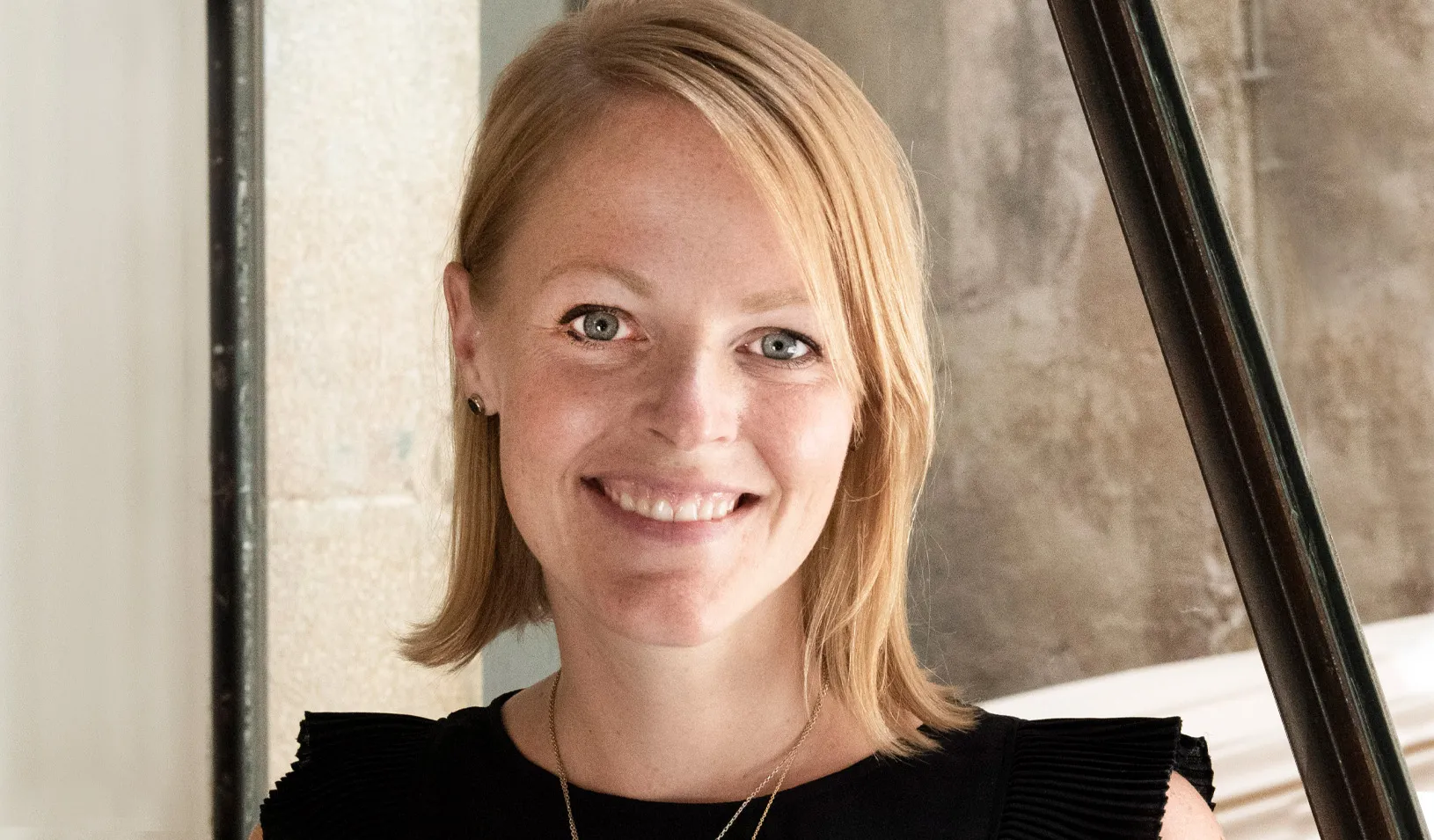Bridging the Pay Gap for Social Impact Interns
Stanford GSB students explore nonprofit and government work with the help of Social Management Immersion Fellowships.
March 10, 2020
Zipline, a startup in Rwanda, uses drone vehicles to deliver medical supplies. MBA CJ Bernstein interned for the company this summer thanks to a Stanford GSB fellowship. | CJ Bernstein
“I knew this was an industry I wanted to explore, but I also knew business school was already very expensive, and I didn’t want to lose money over my summer internship.”
When it comes to choosing a summer internship, students like Ilana Walder-Biesanz face a common dilemma: They’re interested in exploring social impact careers, but nonprofits, government agencies, and social purpose organizations often can’t afford to pay the wages traditionally offered to MBA interns. That leaves students with a disheartening choice: work in a corporate setting that doesn’t match their goals, or try to scrape by financially while exploring the social sector.
Stanford Graduate School of Business students don’t have to make that choice, thanks to the Social Management Immersion Fellowship program, offered by Stanford GSB’s Center for Social Innovation. The SMIF provides financial support to MBA students who secure summer internships with socially driven organizations. It provides stipends that approximate students’ median summer salaries in the private sector. The program allows fellows to bring their critical management skills to organizations focused on social and environmental issues, and in return receive hands-on experience in the social impact sector.
“This program is a relatively low-risk way for students to test different career paths,” says Noopur Vyas, associate director at the Center for Social Innovation. “Are they interested in working in an emerging market? If they’ve come from a consulting background and are thinking of working for a school district, is that the right fit for them? Of course, the overriding question is: ‘Is a social impact career right for me?’”
Since its founding in 1982, SMIF has funded internships for 744 Stanford MBA students at approximately 500 mission-driven organizations around the globe. The program is non-competitive and has no cap on the number of students participating.
“Students receive clarity and confidence,” Vyas says. “It pushes some who might otherwise talk themselves out of such a career to try something new, since the financial risk of taking such a role in your career is a lot higher than taking on a short internship.”
The organizations that hire the interns reap big rewards as well.
“We survey employers about this, and they’re grateful for the skill sets MBA students bring to their organizations,” Vyas says. “We suggest employers give them a project they can accomplish within eight to 10 weeks, and the students run with it. It may be a go-to-market strategy, a fundraising plan for how to approach investors or foundations, or something as simple as developing a website or modernizing the way the organization interacts with customers.
“We then ask employers to put a dollar amount on how much value the MBA student contributed to their organization,” Vyas adds. “It’s always much higher than the amount of salary the student actually earns.”
Among the 19 fellows who participated in SMIF last summer were Walder-Biesanz, Jessica Kaushal, and CJ Bernstein.
Planning and Strategy at a Drone Technology Startup
CJ Bernstein | Courtesy of CJ Bernstein
CJ Bernstein was drawn to the intersection where profitable venture meets positive global impact. She’d heard about a startup called Zipline and wondered if she could arrange an internship there. The for-profit company, headquartered in California, uses state-of-the-art drone technology to deliver vital medical supplies to remote health facilities throughout Rwanda and Ghana, often in areas made inaccessible due to weather or poor road conditions.
“I’d heard about SMIF on campus; they encourage students to take more impactful roles, whether at true nonprofits or at for-profits that have social missions,” she says. “Zipline is a model of a service that people in government and health organizations want enough that they’ll pay for it, but it’s also making really significant strides to increase access to health care in parts of the world that really need it.”
After SMIF approved the internship and provided a needed stipend, Bernstein found herself part of an international team working to scale the company beyond Rwanda and Ghana.
“Zipline is at the stage where they’re collecting a lot of data about the operation, and I was helping to build a muscle around using that information to make data-driven decisions on the operations side,” she says. “I helped pull together a prototype of a weekly report on business review metrics to help the team figure out how they can use and understand them and enable the team to do their jobs even better.”
Bernstein also worked on Zipline’s next-generation drone-dropped packaging; shared meals and conversation with engineers, business development specialists, and scientists from around the world; and socialized with her Rwandan coworkers. The experience helped clarify where her passion lies.
“It’s the space between top-down strategic thinking and bottom-up operational thinking — where those two meet,” she says. “That’s where you can make decisions that impact things like environmental outcomes, which customers you serve, and who among them are the neediest who need to be prioritized. This summer I realized this is the place I want to play, and I didn’t know that before.”
Grappling with Policy Issues in City Government
Jessica Kaushal | Courtesy of Jessica Kaushal
Some SMIF fellows discover the program while trying to fund a summer internship, but Jessica Kaushal had her eye on SMIF from the start.
“When I applied to business school, SMIF was an important signal of Stanford’s commitment to social impact,” she says. “I came to the GSB because I knew it was a school that would help me on my public service journey.”
Having worked on a Texas political campaign and at a Washington, D.C., policy think tank, Kaushal was interested in finding a summer internship that would give her a deeper understanding of public policy issues. With financial support from SMIF, she was able to take an internship with Boston City Councilor Michelle Wu, where she helped draft a progressive housing policy agenda. She attended city council meetings, participated in internal deliberations with Wu and her policy director, and conducted extensive research and analysis.
“This was a chance to understand the stakeholders at the table, and the specific policies the city could pass to move the needle,” she says. “I ended up drafting almost 200 pages that took a benchmark of where we were and opportunities for us to be ambitious. I met with 10 stakeholder groups, worked with the councilor’s policy director, and got to spend time with local officials and map out what my own career in local government might look like.”
Working with Boston’s bright, diverse, and motivated staff and council members gave Kaushal the confirmation she had been seeking.
“I was so inspired to see people who looked like me leading the way,” she says. “I realized that my long-term goal is to be in city government. And that while public policy problems are complicated, it’s energizing because it’s a journey, and along the way you get to learn from people who are different from you. You have to get creative and make some hard choices, and you get an opportunity to make a difference on something that matters.”
An Inside Look at a Premier Performing Arts Organization
Ilana Walder-Biesanz | Courtesy of Ilana Walder-Biesanz
Ilana Walder-Biesanz knew she wanted to work in performing arts management but was pessimistic she’d find a paid summer internship in the field.
After learning about SMIF at Stanford’s annual activities fair, she searched for internships at a variety of opera companies, theaters, and symphonies. With the help of one of her GSB professors and a GSB alumnus, she contacted American Ballet Theatre Executive Director Kara Barnett, who agreed to the internship, which SMIF helped fund. Upon arriving in New York, Walder-Biesanz was handed a portfolio of projects, including global fundraising with the ABT’s head of development and working with the head of education and outreach on the company’s summer intensive programs.
“There was also a project on database software for the entire organization, where I worked a lot with both finance and marketing,” she says. “Overall, I really got to see into all the major administrative departments.”
In addition to attending dress rehearsals, watching well-known principal dancers, and learning how the company engages with donors, Walder-Biesanz received an insider’s perspective on the resource constraints faced by performing arts organizations.
“I’m taking away industry understanding,” she says. “When you go on the inside, you want to keep some of that optimism, that there’s so much room for improvement. But you also see the day-to-day reality and obstacles they face. I don’t think I fully grasped the situation, especially for an organization at that scale; I’d worked with smaller arts organizations before, but much, much smaller. I don’t think I really understood what it was like on the inside of an organization of that scale until I was there.
“It didn’t scare me away from wanting to run one someday,” she adds, “but I think it made me understand what that challenge is.”
Her experience couldn’t have taken place without SMIF funding, she says.
“Among the handful of performing arts organizations that were willing to put money behind having me there for the summer, none were paying what it would have cost me for rent and food in the city I’d need to live in,” she says. “SMIF made it possible without incurring a huge sacrifice to take the job.”
— Beth Jensen
For media inquiries, visit the Newsroom.
Explore More
Erin Nixon Joins Stanford GSB as Assistant Dean of Admissions

Nia Rose Froome, MBA ’23: Making Local, Fresh Food Available for All

New Research Fund Promotes Responsible Leadership for the Next Century
